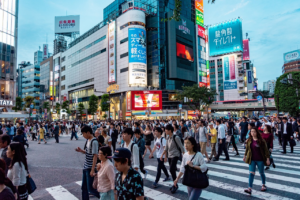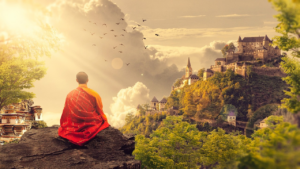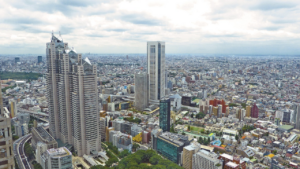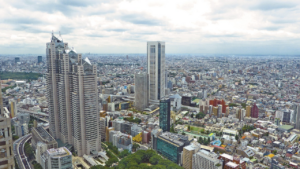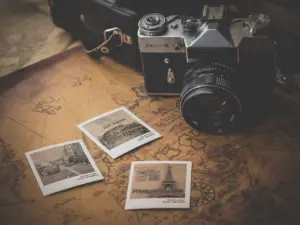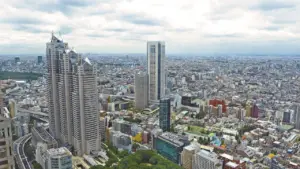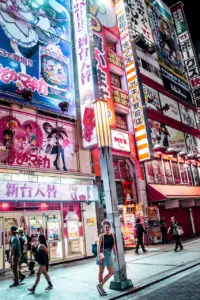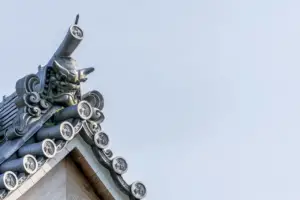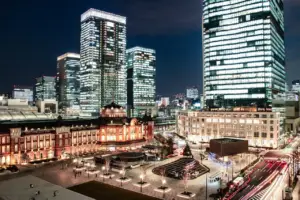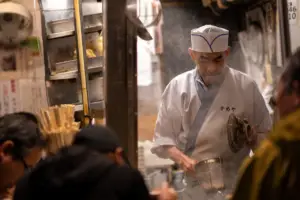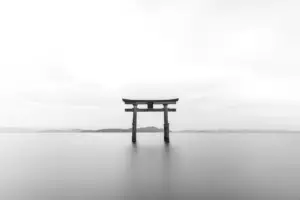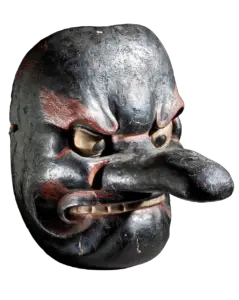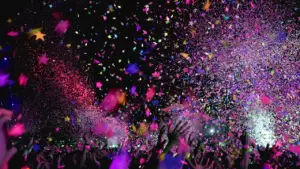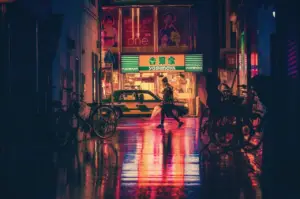You’re in Tokyo and you want to experience the city’s breathtaking skyline. You have two options: Tokyo Tower and Rainbow Bridge. Which one should you choose?
This article will provide a detailed comparison between the two, so you can make an informed decision and have a memorable experience.
Tokyo Tower and Rainbow Bridge are two of Tokyo’s most iconic landmarks, offering stunning views of the city from high above. Both structures are engineering marvels, and both offer unique experiences.
In this article, we will compare the height and size of the two structures, the views they offer, their accessibility and convenience, and overall experience. By the end of this article, you will have a clear understanding of which one is the ultimate choice for you.
Key Takeaways
- Tokyo Tower and Rainbow Bridge are both significant landmarks in Tokyo that offer unique pedestrian walkways with breathtaking views of the city and water.
- They are popular tourist attractions and must-visit destinations in Tokyo that provide a mesmerizing perspective of Tokyo’s boundless energy and captivating beauty.
- Both landmarks offer unparalleled views of Tokyo Bay and take in the city’s natural beauty from above, including the lush greenery of parks and gardens scattered throughout the metropolis.
- While Tokyo Tower is also a symbol of Japan’s rich cultural heritage with various exhibits and displays, Rainbow Bridge is a more romantic and serene experience with its illuminated rainbow colors at night providing a mesmerizing view of Tokyo Bay.
Overview of Tokyo Tower
You’ll love Tokyo Tower. It’s a tall, orange structure that looks like the Eiffel Tower and shines brightly at night. This tower stands at 333 meters high and was built in 1958. It’s made up of four main components: the Main Deck, the Special Observatory, the Top Deck, and the Tower Foot Town.
The Main Deck is located at 150 meters and offers a 360-degree panoramic view of Tokyo. The Special Observatory is located at 250 meters and provides a more specific view of the city. The Top Deck, located at 333 meters, is the highest point of the tower and provides an even more breathtaking view.
Lastly, the Tower Foot Town is located at the base of the tower and is a four-story building that includes restaurants, souvenir shops, and an aquarium.
Tokyo Tower is one of Tokyo’s most popular tourist attractions and is sure to be a highlight of your trip.
Overview of Rainbow Bridge
As you approach Rainbow Bridge, you’ll notice its sleek, modern design that complements the surrounding Tokyo skyline.
This suspension bridge spans Tokyo Bay and was completed in 1993, connecting Shibaura Pier to the Odaiba waterfront area.
The bridge is illuminated at night with changing colors and patterns, enhancing its aesthetic appeal and making it a popular spot for evening walks.
History and construction
When you think about Tokyo Tower and Rainbow Bridge, it’s fascinating to see how both structures were built during different time periods and for different purposes.
Rainbow Bridge was built in 1993 to commemorate the 100th anniversary of the Tokyo Metropolitan Government and provide a new transportation route across Tokyo Bay. The bridge is a suspension bridge that spans 798 meters and stands at 126 meters tall. It is an iconic landmark of Tokyo, and the design was inspired by the Brooklyn Bridge in New York City.
The construction of Rainbow Bridge required more than 1,000 workers and took nearly eight years to complete. The bridge’s design was influenced by several factors, including the need to withstand the frequent earthquakes that occur in Japan, the strong winds that blow across the bay, and the potential impact of typhoons.
The bridge’s foundation was constructed using a method called pneumatic caissons, which involved sinking large metal tubes into the sea floor and then filling them with concrete. This method ensured that the bridge would be able to withstand severe weather conditions and remain stable over time.
Illumination and aesthetics
To truly appreciate the beauty of both structures, take a moment to admire the intricate illumination of Tokyo Tower and Rainbow Bridge.
Tokyo Tower, a 333-meter tall orange and white tower, is lit up with LED lights every night. The illumination of Tokyo Tower changes depending on the season and special events. During cherry blossom season, the tower is illuminated with pink lights, while during Halloween, the tower is covered in orange lights. The combination of the tower’s design and lighting creates a stunning visual effect that attracts tourists from all over the world.
On the other hand, Rainbow Bridge is a suspension bridge that connects Odaiba and Shibaura. The bridge is illuminated with LED lights that change colors every day. The color of the lights is determined by the tide level, with blue lights indicating low tide, green lights indicating medium tide, and orange lights indicating high tide. The bridge’s illumination is not only aesthetically pleasing but also serves as a safety feature, providing visibility for ships passing underneath.
The unique lighting system of Rainbow Bridge adds to the beauty of Tokyo’s skyline, making it a must-see attraction for both locals and tourists.
Pedestrian walkway and views
Walking along the pedestrian walkway, you’ll be treated to breathtaking views of the city and the water. The combination of Tokyo Tower and Rainbow Bridge is a sight to behold, especially at night when they both light up the sky.
Here are five things you can expect to see while walking along the pedestrian walkway:
-
The twinkling lights of Tokyo Tower reflecting off the water of Tokyo Bay, creating a stunning mirage effect.
-
The towering Rainbow Bridge, with its colorful lights and unique design, stretching across the bay and connecting Odaiba to the rest of Tokyo.
-
Panoramic views of the city skyline, including Tokyo Tower, the nearby Roppongi Hills, and the iconic Mount Fuji in the distance.
-
The bustling activity of the waterfront, with boats and ferries passing by and locals enjoying a stroll along the promenade.
-
The peaceful serenity of the water, with its reflection of the city lights creating a calming atmosphere amidst the hustle and bustle of Tokyo.
Overall, the pedestrian walkway offers a unique and unforgettable experience for visitors to Tokyo. Whether you’re a fan of architecture, cityscapes, or simply looking for a peaceful stroll, the combination of Tokyo Tower and Rainbow Bridge is sure to leave a lasting impression.
Height and Size Comparison
At a towering height of 333 meters, Tokyo Tower stands tall and proud in the heart of Tokyo. It has two observation decks that offer stunning views of the city and beyond. The main observation deck, located at 150 meters, provides a 360-degree panoramic view of Tokyo. The second observation deck, located at 250 meters, offers a more intimate view of the city.
Tokyo Tower is made of steel and is painted in a distinctive orange and white color scheme that’s visible from afar. Its size and location make it a popular tourist destination and a symbol of Tokyo.
On the other hand, the Rainbow Bridge’s impressive length of 798 meters cannot be overlooked. It is a suspension bridge that connects the Shibaura and Odaiba districts of Tokyo. The bridge has two decks, one for vehicles and another for pedestrians and bicycles. The pedestrian deck offers a unique perspective of Tokyo Bay and the surrounding area.
The bridge is illuminated at night with rainbow-colored lights, making it a beautiful sight to behold. Although it may not be as tall as Tokyo Tower, the Rainbow Bridge’s size and design make it a significant landmark in the city.
Views from Tokyo Tower
Looking out from Tokyo Tower’s observation deck provides a breathtaking view of the sprawling metropolis below. You can see the city’s iconic landmarks, such as the Tokyo Skytree and the Rainbow Bridge, from a bird’s eye view. The tower’s height of 333 meters allows you to witness the city’s immensity and the vastness of the Pacific Ocean beyond.
From the observation deck, you can also see Tokyo’s bustling streets and the majestic Mount Fuji in the distance. The view is especially mesmerizing at night when the city is lit up with neon lights. You can enjoy the view while sipping on a cup of coffee or a glass of champagne at the deck’s cafe.
The Tokyo Tower’s observation deck is truly a must-visit attraction for anyone visiting the city.
Top 3 Landmarks You Can See from Tokyo Tower’s Observation Deck
-
Tokyo Skytree – Japan’s tallest structure at 634 meters.
-
Rainbow Bridge – A suspension bridge connecting Tokyo’s waterfront area to the city center.
-
Tokyo Bay – A beautiful bay where you can see boats sailing in and out of the harbor.
Views from Rainbow Bridge
When it comes to viewing Tokyo from above, the Rainbow Bridge offers a unique perspective of the city that differs from what you’ll see at Tokyo Tower.
One key difference is the illumination effects at night – the bridge itself is lit up in a rainbow of colors, providing a stunning backdrop to the city lights.
Additionally, the height and location of the bridge offer a different vantage point than Tokyo Tower, allowing you to see more of the waterfront and surrounding areas.
Unique perspectives of the city
From atop Tokyo Tower or Rainbow Bridge, you can gain a unique and mesmerizing perspective of the city’s boundless energy and captivating beauty. Here are four reasons why you should experience the city from these vantage points:
-
The sheer size of Tokyo is awe-inspiring from above. Witness the endless sea of towering buildings, bustling streets, and neon lights that create a futuristic landscape unlike any other.
-
Tokyo Tower and Rainbow Bridge offer unparalleled views of Tokyo Bay. The sight of ships and boats moving in and out of the harbor, along with the illumination of the Rainbow Bridge, is a sight to behold.
-
Take in the city’s natural beauty from above, including the lush greenery of parks and gardens scattered throughout the metropolis.
-
Experience the ever-changing colors of Tokyo’s skyline, from the warm hues of sunrise to the vibrant colors of sunset and the glittering lights of the city at night.
These unique perspectives allow you to truly appreciate the city’s grandeur and intricacies. Whether you’re a tourist or a local, the view from Tokyo Tower or Rainbow Bridge is a must-see experience that’ll leave you in awe of the city’s beauty.
Illumination effects at night
As you continue to explore the city, your attention is drawn to the stunning illumination effects that light up the night sky. Tokyo offers a plethora of options, but two iconic structures stand out in particular – the Tokyo Tower and Rainbow Bridge. These structures are not only impressive during the day, but they truly come alive at night, showcasing their unique illumination effects that leave you in awe.
To fully appreciate the beauty of these structures at night, let’s take a closer look at their illumination effects. The following table provides a side-by-side comparison of the Tokyo Tower and Rainbow Bridge, highlighting their unique features and colors:
| Tokyo Tower | Rainbow Bridge |
|---|---|
| Orange and white lights | Rainbow colors |
| Lights up in sections, resembling a candle flame | Glittering diamonds effect |
| Height: 332.9 meters | Length: 798 meters |
| Illuminates until 11:00 PM | Illuminates until midnight |
| Best viewed from nearby parks, such as Shiba Park | Best viewed from Odaiba or the Tokyo Bay area |
Both structures offer a unique and awe-inspiring experience, but it’s up to you to decide which one to visit first. Whether you choose the Tokyo Tower’s warm and inviting ambiance or the Rainbow Bridge’s dynamic and colorful display, you won’t be disappointed. So, take your time and soak in the beauty of these iconic structures, as they light up the night sky and leave a lasting impression on your memory.
Differences from Tokyo Tower’s views
Exploring different viewpoints around the city can offer a fresh perspective on the unique features and characteristics of Tokyo’s illuminating structures. When it comes to comparing Tokyo Tower and Rainbow Bridge, their views are vastly different. Here are some key differences to consider:
-
Tokyo Tower offers a bird’s eye view of the city, with its observation decks standing at 150 and 250 meters high. This allows visitors to see the city from a higher vantage point, giving them a better sense of the layout and scale of Tokyo. Additionally, Tokyo Tower offers unobstructed views of the nearby areas, including the bustling Shibuya and Shinjuku districts.
-
On the other hand, Rainbow Bridge provides a more panoramic view of the city, stretching along the water and connecting Odaiba to the mainland. Its observation deck stands at 47 meters high, which is lower than Tokyo Tower, but it offers a unique viewpoint of the Tokyo Bay area. Visitors can see the illuminated ferris wheel at Palette Town, the futuristic architecture of Odaiba, as well as the boats and ships that travel through the bay.
Overall, both Tokyo Tower and Rainbow Bridge offer their own unique perspectives of Tokyo at night. Each structure has its own strengths and can provide visitors with a different experience. Whether you want to see the entire city from a high vantage point or take in the sights of Tokyo Bay, there’s something for everyone.
Accessibility and Convenience
You’ll find that getting to Tokyo Tower is a breeze with its central location and multiple transportation options. The tower is located in the heart of Tokyo, giving visitors easy access to some of the city’s top attractions. Additionally, there are several transportation options available to visitors, which makes getting to Tokyo Tower simple and convenient.
To give you an idea of the transportation options available, take a look at the table below:
| Transportation Option | Description |
|---|---|
| Subway | Tokyo Tower is easily accessible by subway. Simply take the Oedo Line or Hibiya Line to the Akabanebashi Station. From there, it’s just a short walk to the tower. |
| Bus | Buses also run to Tokyo Tower, with several routes stopping at the tower’s base. This is a great option for those who want to see more of the city on their way to the tower. |
| Taxi | Taxis are readily available in Tokyo and can be a convenient way to get to Tokyo Tower. However, they can be expensive, so it’s important to factor that into your budget. |
With so many transportation options available, getting to Tokyo Tower is a breeze. Whether you prefer to take the subway, bus, or taxi, you’ll be able to get to the tower quickly and easily. This accessibility and convenience make Tokyo Tower a top attraction in Tokyo and a must-visit for anyone in the city.
Overall Experience
To truly appreciate the overall experience of visiting this iconic landmark, you simply must take the time to explore all that Tokyo Tower has to offer. From the moment you step inside the tower, you’ll be transported to a world of breathtaking views, cultural exhibits, and thrilling attractions.
Here are just a few reasons why Tokyo Tower is the ultimate choice for an unforgettable experience:
-
Panoramic views: Tokyo Tower offers some of the most spectacular views of the city from its two observation decks. The Main Deck, located at 150 meters high, provides a 360-degree view of Tokyo’s skyline, while the Top Deck, at 250 meters high, offers a more exclusive and intimate experience.
-
Cultural immersion: Tokyo Tower is not just a tourist attraction, but also a symbol of Japan’s rich cultural heritage. Visitors can explore the various exhibits and displays, which showcase the country’s art, history, and traditions.
-
Thrilling attractions: For those seeking an adrenaline rush, Tokyo Tower has several attractions that cater to all ages and interests. Whether it’s the Skywalk, the 600-meter-high outdoor walkway, or the One Piece Tower, an indoor amusement park based on the popular manga series, there’s something for everyone.
Tokyo Tower provides an unparalleled overall experience that combines stunning views, cultural immersion, and thrilling attractions. If you’re looking for the ultimate showdown between Tokyo Tower and Rainbow Bridge, there’s no contest – Tokyo Tower is the clear winner.
Verdict and Recommendations
The verdict is in: experiencing all that Tokyo Tower and Rainbow Bridge have to offer is a must-do for anyone visiting the city. Both landmarks provide stunning views of the cityscape, but each has its own unique charm. If you’re looking for a bird’s eye view of Tokyo, then Tokyo Tower is the way to go. The observation decks offer 360-degree views of the city, including iconic landmarks like Mount Fuji and Tokyo Skytree. Plus, the tower’s history and architecture make for an interesting cultural experience.
On the other hand, if you’re looking for a more romantic and serene experience, Rainbow Bridge is the perfect choice. The bridge’s illuminated rainbow colors at night provide a mesmerizing view of Tokyo Bay. While the bridge doesn’t have observation decks like Tokyo Tower, the view from the bridge itself is still breathtaking. Plus, the bridge can be crossed on foot or by bike, making it a fun and unique way to explore the city. Overall, both Tokyo Tower and Rainbow Bridge are must-visit landmarks that offer a unique perspective of Tokyo.
| Features | Tokyo Tower | Rainbow Bridge |
|---|---|---|
| Height | 333m | 798m |
| Observation Decks | 2 | N/A |
| View | 360-degree view of Tokyo | View of Tokyo Bay |
| Access | Closest station is Akabanebashi | Can be crossed on foot or by bike |
| Cost | ¥1,200 for main deck, ¥3,000 for top deck | Free |
Frequently Asked Questions
How much does it cost to visit Tokyo Tower and Rainbow Bridge?
If you’re planning a visit to Tokyo Tower and Rainbow Bridge, you should be aware of the costs involved. The admission fee for Tokyo Tower ranges from 900 to 3,000 yen depending on which observation deck you choose to visit.
Meanwhile, Rainbow Bridge is free to cross on foot or by bicycle, but there is a toll for cars and buses. The toll varies depending on the size of the vehicle and the time of day, but it typically ranges from 1,000 to 3,000 yen.
Overall, the cost of visiting these two iconic landmarks in Tokyo will depend on your mode of transportation and which parts of Tokyo Tower you choose to visit.
Are there any restaurants or cafes located at the top of Tokyo Tower or Rainbow Bridge?
At the top of Tokyo Tower, there is a restaurant called Top of Tokyo, which offers both Japanese and Western cuisine. It’s located on the 52nd floor and provides a panoramic view of Tokyo.
Additionally, there’s a cafe called Cafe La Tour on the 1st floor, which offers light snacks and drinks.
On the other hand, there are no restaurants or cafes located at the top of Rainbow Bridge. However, there are several options for dining and drinking in the surrounding areas, such as the Odaiba area, which is known for its variety of restaurants and cafes.
Can visitors access both Tokyo Tower and Rainbow Bridge on foot or by bike?
Yes, visitors can access both Tokyo Tower and Rainbow Bridge on foot or by bike.
Tokyo Tower has a pedestrian pathway that leads to the tower’s entrance, which is accessible by foot or bike.
Visitors can also access Rainbow Bridge on foot or by bike via the pedestrian pathway that runs alongside the bridge.
However, it’s important to note that both Tokyo Tower and Rainbow Bridge are quite tall structures, and it may be a strenuous climb to reach the top on foot or by bike.
Visitors should also be aware of any safety regulations or restrictions that may apply to accessing these structures on foot or by bike.
Are there any events or festivals hosted at Tokyo Tower or Rainbow Bridge throughout the year?
You may be interested to know that both Tokyo Tower and Rainbow Bridge host several events and festivals throughout the year.
Tokyo Tower is a popular venue for concerts, exhibitions, and cultural events, and hosts several festivals such as the Tanabata Star Festival and the Tokyo Tower Cherry Blossom Festival.
Similarly, Rainbow Bridge also hosts various events like the Tokyo Bay Fireworks Festival and the Tokyo Rainbow Pride Festival.
The best way to keep track of these events is to regularly check their official websites, social media pages, or local event calendars.
Whether you’re a local or a tourist, there’s always something exciting happening at Tokyo Tower and Rainbow Bridge.
How do Tokyo Tower and Rainbow Bridge fare during inclement weather conditions, such as typhoons or heavy rain?
During inclement weather conditions, such as typhoons or heavy rain, both Tokyo Tower and Rainbow Bridge are designed to withstand strong winds and heavy rain. Tokyo Tower, standing at 333 meters tall, has a triangular cross-section and a central pillar made of reinforced concrete, which makes it highly resistant to earthquakes and typhoons. Additionally, the tower is equipped with a lightning rod that can attract lightning strikes away from the structure.
Similarly, Rainbow Bridge, spanning over 800 meters across Tokyo Bay, has a suspension bridge design that allows it to flex and sway without breaking during strong winds or earthquakes. The bridge is also fitted with wind-resistant cables that can withstand gusts of up to 80 meters per second.
Despite their impressive engineering, however, both Tokyo Tower and Rainbow Bridge may close during severe weather conditions to ensure the safety of visitors and commuters.
Conclusion
In conclusion, when it comes to deciding between Tokyo Tower and Rainbow Bridge, it ultimately depends on the experience you’re seeking.
Tokyo Tower offers a more traditional and iconic view of Tokyo, with its impressive height and observation deck. However, Rainbow Bridge provides a modern and unique perspective of the city, offering a stunning view of Tokyo Bay and the city skyline.
Moreover, accessibility and convenience play a significant role in making a choice between the two. Tokyo Tower is more easily accessible and offers a range of activities, including restaurants, souvenir shops, and a wax museum. On the other hand, Rainbow Bridge is only accessible by car or foot and offers limited amenities.
Ultimately, both Tokyo Tower and Rainbow Bridge offer breathtaking views of Tokyo, and the decision between the two depends on personal preference and priorities. However, we recommend visiting both to experience the best of what Tokyo has to offer.






















